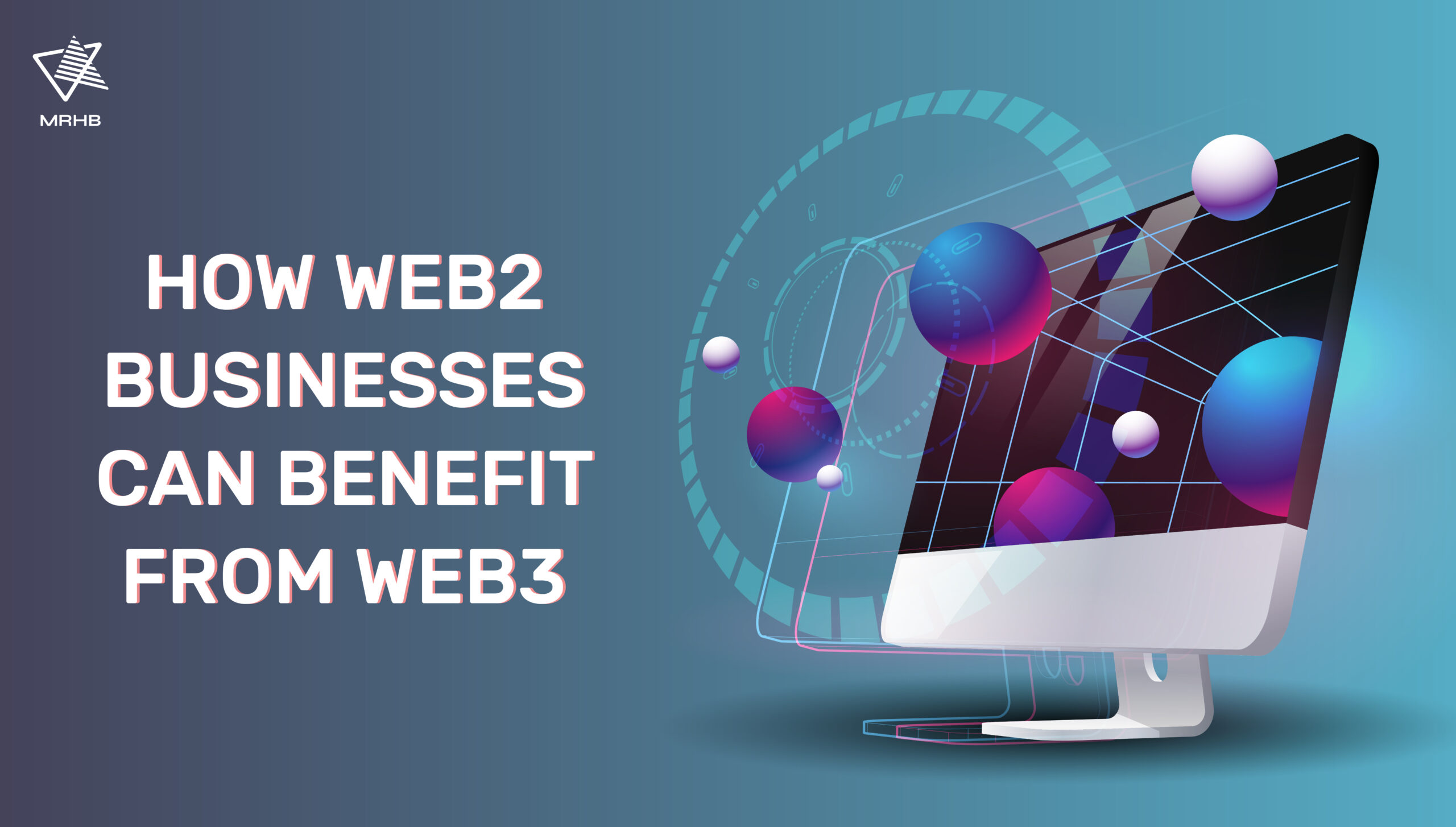As the world wide web evolves, so do businesses. Those that have a presence online have most likely interacted with the web2 version of the Internet. From e-commerce to social media, web2 companies have built and grown their businesses to greater heights, earning profit, reputation, and customer loyalty. But as the new iteration of the web has appeared i.e. Web3, there seems to be more opportunities to expand the business of web2 companies even further.
What Is Web3?
Web3 is the read-write-own version of the internet where data is decentralized. It is composed of interconnected nodes without a central server. And so on web3, data is owned by the user and not a centralized entity. However, do note that this concept is distinct from Web 3.0 the Semantic Web, which is explained in more detail here.
Differences Between Web2 and Web3
Web2 is known as the read-and-write web. Data is kept in a centralized server and controlled by a centralized authority. Think Facebook, Twitter, and Etsy. While you can interact on those platforms and share information, the data on those platforms do not belong to you.
What’s more, the content that you put out can be tracked and monetized by those companies, even if you’re a business running on those web2 platforms. If for some reason one of those platforms shuts down, it’s unlikely that you can retrieve any of the data.
In comparison, web3 allows you, the user, to completely own and access your data. Simply put, web3 is giving you control over data ownership and monetization. Essentially, you are the boss.
The Backbone of Web3—Blockchain
Web3 is virtually nothing without blockchain technology. It is what makes data ownership possible.
As a distributed ledger technology, blockchain upholds these key aspects:
- Distributed: everybody on the network will have a copy of the entire chain.
- Ledger: tracks value exchange between two parties and data once written on the ledger is immutable.
- Secured: cryptographic techniques secure and validate transactions.
- Shared: transactions are conducted without intermediaries via peer-to-peer networks.
Since the core concept of blockchain technology is that it’s decentralized, data transfer and the verification process can be expediated.
Without intermediaries, not only are transactions sped up but the user can also choose how to present the data being transferred.
For each piece of data, they can select which information to reveal and verify the authenticity. This enables the user to share specific data safely and rapidly without revealing confidential information. As such, data ownership has been put back into the hands of the user without interference by a central entity.
Web2 Companies Already on Web3
Web2 is primarily controlled by major tech companies like FAMGA that monopolize the way users interact on the web. Decentralized technology, however, has potentially created the opportunity to eradicate their dominion.
With web3, a more trustworthy environment can be created, the concept of privacy is truly respected, and control is distributed among users themselves.
Digital assets on web3 are transferable across the network and are thus valuable outside the platform to which the assets belong. Therefore, resources spent on buying digital assets are not wasted and the assets themselves do not generally depreciate or lose value.
For artists, this gives them the opportunity for a different financial model that monetizes their art and is highly rewarding. OpenSea, one of the largest NFT marketplaces, made a whopping $10 billion in sales in 2021.
FAMGA companies, albeit monopolizing the web2 space, are taking advantage of the nascent web3 opportunities. While they still operate in a centralized manner, their interaction on web3 would have to be decentralized. It would seem that these companies are testing a hybrid method of interacting with the two iterations of the internet.
How are FAMGA companies adopting Web3 technology?
- Facebook: they have betted completely on the Metaverse and rebranded the company’s name to “Meta”. The company also introduced its own stablecoin, Diem, and released the Novi wallet, which allows users to trade Paxos stablecoins on the platform. However, Meta pulled the plug on the project in July.
- Twitter: they have introduced the concept of allowing users to reward their favorite creators with cryptocurrencies, and have planned to release other crypto and NFT-based features.
- Instagram: they have just introduced digital collectibles to support creators in showcasing NFTs on the platform.
These big tech web2 companies are gradually accepting recent developments in the web3 space and the importance it holds in the future of their companies. As a headstart over their competitors, they have begun integrating web3 features into their business structures and aiming for a seamless transition to the new version of the internet.
Business Potential on Web3 for Web2 Companies
While web2 companies have been promoting the use of NFTs for creators to produce and sell digital art, there are in fact so much more business opportunities to explore on web3.
Here are some examples.
Supply chain management with blockchain
Data transparency and immutability are the two aspects of blockchain technology that are most attractive to the supply chain management industry. Consumers generally are becoming aware of the need for ethical and sustainable production. As a consequence, they are demanding that companies be transparent in terms of where the products come from and who made them.
Providence uses blockchain technology to provide accessible, trustworthy information about a product’s origin and its impact on people and the planet. They work with companies who wish to prove their impact with data on their supply chain using blockchain technology.
NFTs beyond art
Non-fungible tokens or NFTs are assets that are uniquely identifiable on the blockchain. Unlike other crypto tokens, NFTs use a piece of code that makes each asset unique and distinguishable. In simple terms, NFTs are assets that prove ownership of basically anything.
Several NFT use cases include:
- Tickets to an event
- Equity in a company
- Loyalty status to brands
- Virtual assets in a video game
- Exclusive membership to a club
- Exclusive merchandise for VIP customers
For web2 companies, using NFTs may solve the problems of duplication and verification. Furthermore, web2 companies that are dependent on virtual services such as video games and online events could make use of NFTs.
Souq NFT for Business Development
At MRHB, we’re building a complete decentralized finance solution that upholds the values of ethics based on Islamic principles. One of the solutions is the Souq NFT marketplace whereby users can mint and sell NFTs.
At the time of writing, we are building a new version of Souq NFT that will provide a diverse range of offerings. This is includes but not limited to the minting of Soul Bound Tokens, NFT assets for play-to-earn games, and a platform for the collaboration between businesses to create NFTs for specific use cases. These product offerings will be available early next year.
In the meantime, you may explore and purchase the available collections of NFT art on Souq NFT marketplace which is free from negative content such as nudity, adult content, hate speech, and racism.

